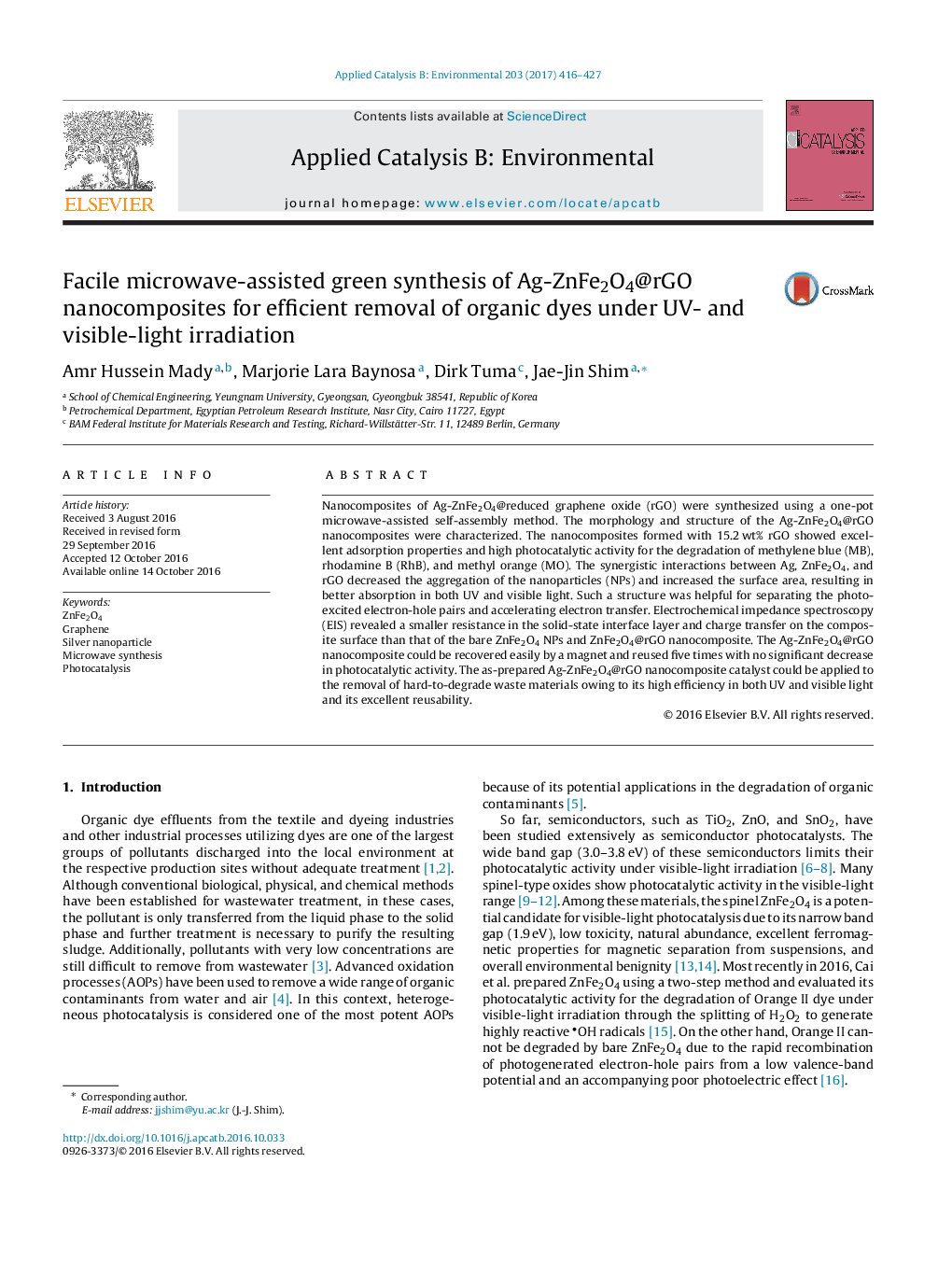| Article ID | Journal | Published Year | Pages | File Type |
|---|---|---|---|---|
| 6454488 | Applied Catalysis B: Environmental | 2017 | 12 Pages |
â¢Ag-ZnFe2O4@rGO composite was synthesized by one-pot microwave method in 10 min.â¢The composite had a very large surface area and showed very high performance.â¢The composite decomposed 20 ppm MB very fast within 30 min under visible light only.â¢The composite showed excellent recyclability and reusability.
Nanocomposites of Ag-ZnFe2O4@reduced graphene oxide (rGO) were synthesized using a one-pot microwave-assisted self-assembly method. The morphology and structure of the Ag-ZnFe2O4@rGO nanocomposites were characterized. The nanocomposites formed with 15.2Â wt% rGO showed excellent adsorption properties and high photocatalytic activity for the degradation of methylene blue (MB), rhodamine B (RhB), and methyl orange (MO). The synergistic interactions between Ag, ZnFe2O4, and rGO decreased the aggregation of the nanoparticles (NPs) and increased the surface area, resulting in better absorption in both UV and visible light. Such a structure was helpful for separating the photo-excited electron-hole pairs and accelerating electron transfer. Electrochemical impedance spectroscopy (EIS) revealed a smaller resistance in the solid-state interface layer and charge transfer on the composite surface than that of the bare ZnFe2O4 NPs and ZnFe2O4@rGO nanocomposite. The Ag-ZnFe2O4@rGO nanocomposite could be recovered easily by a magnet and reused five times with no significant decrease in photocatalytic activity. The as-prepared Ag-ZnFe2O4@rGO nanocomposite catalyst could be applied to the removal of hard-to-degrade waste materials owing to its high efficiency in both UV and visible light and its excellent reusability.
Graphical abstractDownload high-res image (332KB)Download full-size image
